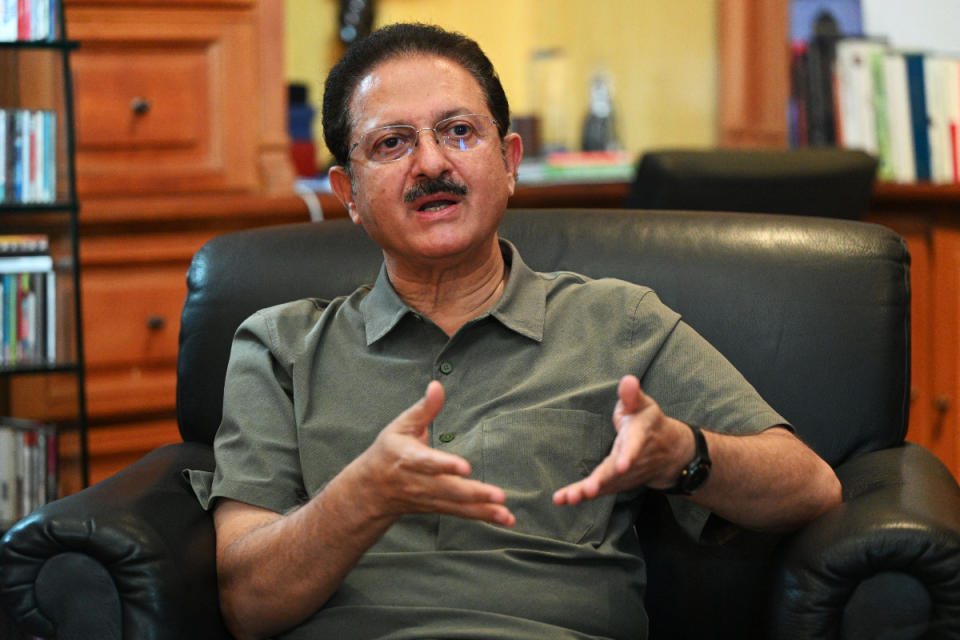422 Facilities Named on Pakistan Accord’s First Supplier List

The Pakistan Accord has listed the first 422 facilities to be covered under the internationally binding agreement after completing a pilot study in July.
With more than 65 global brand and retail signatories including H&M, PVH, Fast Retailing, Asos Gap, Inc., the binding safety program between unions and international brands and retailers is based on the model of the International Accord for Health and Safety in the Textile and Garment Industry.
More from Sourcing Journal
The Pakistan Accord was announced in December 2022 as a follow up after a successful run in Bangladesh, where the 2013 Rana Plaza collapse and subsequent death toll ignited urgent safety action.
The factories listed supply 52 of the global brands and retailers and additional supplier names and details are expected to be added in the coming weeks.
“This is a great step forward in safety for all the workers in more than 400 factories that are supplying Accord brands in Pakistan,” deputy general secretary, UNI Global Alke Boessiger told Sourcing Journal. “This list also includes textile mills, reflecting the importance of this part of the textile and garment industry in the country. We are happy that many brands have already signed the Pakistan Accord and call on more to join this great programme, which has proven so successful in Bangladesh. It will make a huge difference to the industry in Pakistan and increase its potential to grow.”
The factory list shares suppliers’ geographical information, as well as data on the number of floors in each building, workers on site, and other pertinent intel.
“The data points in this list provide important details on the structure, floors, workforce size, and active brands within each supplier facility. We look forward to this information playing a key role in mapping the Pakistani textile and garment industry and in ensuring transparency and accountability within the supply chains of our signatories,” said Joris Oldenziel, executive director of International Accord.
Of these, 229 factories, or almost 46 percent of the listed facilities, are in the Karachi area, located on the Southern coast on the Arabian sea. Other important centers of manufacturing listed are Lahore in the Northeast, which is Pakistan’s second largest city after Karachi, with 65 factories. The third largest city in the country, Faisalabad, has 70 factories; with Sialkot, Baluchistan, Sheikhupura and other cities home to the remaining facilities.
While most listed facilities offer cut, make and trim (CMT) operations, others include integrated CMT and fabric mills. There are some standalone fabric mills as well.
Many are small; more than 90 have 500 workers or less. The biggest, Sadaqat Limited in the Faisalabad area, is an integrated CMT and fabric mill employing 11,641. Other larger players include Interloop Ltd – Hosiery Division 2, also in the Faisalabad area with 8,010 workers, CMT only, Al-Karam Textile Mills (Pvt) Ltd in Karachi, Integrated CMT & fabric mill with 7,488 workers.
Pakistani manufacturers appeared to be “both apprehensive” and hopeful that “this will help us with our enormous economic difficulties,” said a manufacturer who asked not to be named. “From here begins the harder work: the inspections, the funds to fix and manage safety issues.”

Pakistan’s textile and apparel sector has been reeling under economic difficulties including the global slowdown and internal political strife. Acute energy shortages, a growing trade deficit, and rising gas and power prices are just some of the challenges. Manufacturers said many units were running far below capacity to blunt price inflation.
The nation’s textile and apparel exports contracted by 14.63 percent to $16.5 billion in the 2022-23 financial year ended June 30, per Pakistan Bureau of Statistics data.
Factory owners are worried that the tough economic climate would get in the way of factory remediation projects and equipment upgrades and fixes which often require them to import machines from abroad.
Factories imported 57.03 percent less textile machinery in the recently ended financial year, while manufacturers say they lack the gas and power needed to operate, face trouble securing letters of credit, and run into lengthy delays getting refunds meant for exporters. Higher capital costs are another hurdle with interest rates rising more than 20 percent as the central bank aims to counter inflation.
Dangerously low foreign exchange reserves create problems for manufacturers importing fire and safety equipment, the approach Bangladesh undertook several years ago.
In July, the central bank had barely enough reserves to cover a month of controlled imports, when a $3 billion International Monetary Fund (IMF) bailout came through, including an immediate disbursal of approximately $1.2 billion.
In a July 12 statement, the IMF said, “Pakistan’s economy was hit hard by significant shocks last year, notably the spillovers from the severe impacts of floods, the large volatility in commodity prices, and the tightening of external and domestic financing conditions. These factors together with uneven policy implementation under the EFF combined to halt the post-pandemic recovery, sharply increase inflation, and significantly depleted internal and external buffers.”
The bailout offered Pakistan “an opportunity to regain macroeconomic stability and address these imbalances through consistent policy implementation,” it added.
However, it is clear that IMF loans come with strings attached. Pakistan must shore up monetary policies and manage subsidies on structural reforms, particularly in the energy sector. This isn’t expected to make manufacturing easier, but should help the Pakistani government support the sector that powers more than 60 percent of exports and employs more than 40 percent of the national workforce.
The stakes are even higher in an election year.
Prime Minister Shehbaz Sharif billed the IMF bailout as a major step forward.
“It bolsters Pakistan’s economic position to overcome immediate- to medium-term economic challenges, giving next government the fiscal space to chart the way forward,” he said.

